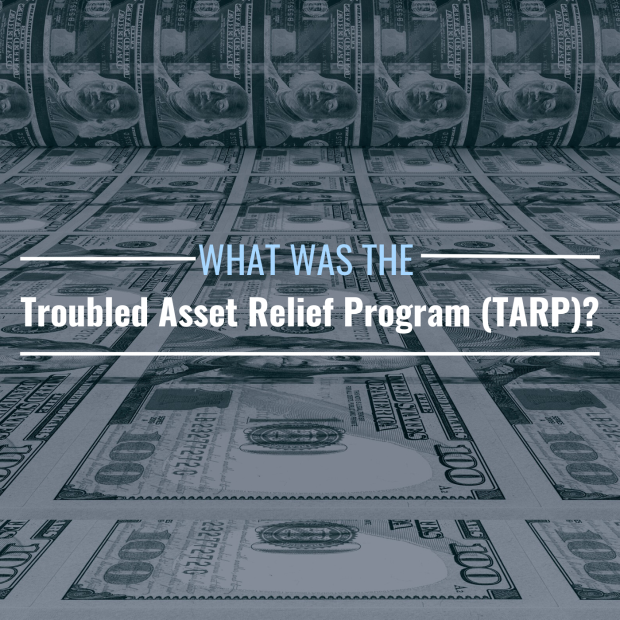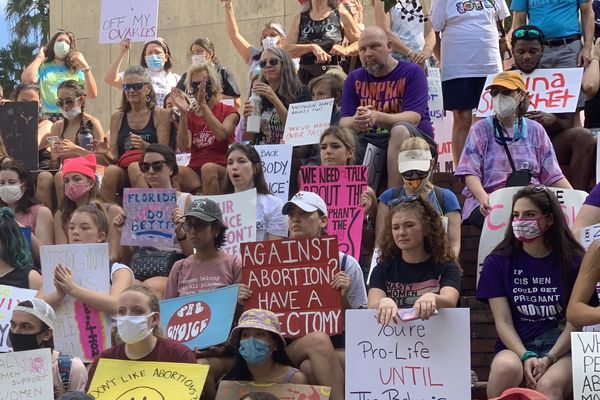
Nerthuz for iStockphoto; Canva
What Was the Troubled Asset Relief Program (TARP)?
The Troubled Asset Relief Program, popularly known as TARP, was a program created under the Emergency Economic Stabilization Act of 2008. It was approved by Congress and signed into law by President George W. Bush on October 3, 2008.
TARP provided up to $700 billion government-funded emergency liquidity in an effort to stabilize key economic sectors, particularly banks and automakers, during the turbulent Financial Crisis of 2007–2008. Fueled by toxic, subprime mortgages that were traded globally by investment banks that had taken on excessive risks in their quest for oversized profits, the crisis had seeped into every aspect of American life.
Nearly 10% of U.S. homeowners defaulted on their mortgages; some of the country’s biggest banks, like Lehman Brothers and Bear Stearns, declared bankruptcy, while Fannie Mae and Freddie Mac, the government’s mortgage guarantors, entered financial receivership. When the world’s largest insurance company, American International Group (AIG), threatened go under, it was a clear signal that Wall Street needed to be bailed out—and fast.
Sensing trouble, in the early part of 2008, U.S. Treasury Secretary Hank Paulson drafted emergency legislation in the event of a total collapse of the financial system. In his plan, the government would purchase $500 billion in “troubled” assets from financial institutions, restore confidence in credit markets, and otherwise avert an economic disaster. But incensed Congressmen dismissed the idea of sending financial institutions taxpayer-funded helicopter money, and the bill was shot down by the U.S. House of Representatives in a vote of 228 to 205 on September 29, 2008.
On Wall Street, the Dow Jones Industrial Average reacted by plummeting 700 points, triggering a stock market crash. This would mark the beginning of a two-year economic contraction known Great Recession, wherein eight million Americans would lose their jobs. It would be second only to the Great Depression in terms of its severity.
Facing mounting pressures from constituents as well as from President Bush, who even tried to give the Treasury Secretary the authority to run the program without congressional support, lawmakers on both sides of the aisle reconsidered their positions, and the amended bill was passed four days later, on October 3, 2008.
"Monday, I cast a blue-collar vote for the American people. Today, I am going to cast a red-white-and-blue collar vote with my hand over my heart for this country, because things are really bad and we don't have any choice. We're out of choices and our backs are up against the wall." —U.S. Representative Zach Wamp (R-Tenn.), October 3, 2008
What Was the Cost of the Troubled Asset Relief Program?
At the time of its passage, Congress allocated $700 billion to TARP, to be disbursed in three parts: $250 billion to initially begin the program, then $100 billion at the discretion of the President, with the remaining $350 billion to be enacted upon the request of the Treasury Secretary with congressional approval.
In 2012, under the Dodd-Frank Act, this sum was lowered to $475 billion. It was dispersed in the following ways:
- $250 billion was allocated to stabilize financial institutions.
- $27 billion went to restart credit markets.
- $82 billion was sent to the U.S. auto industry.
- $70 billion was directed to keep AIG afloat.
- $46 billion went directly to U.S. homeowners struggling to avoid foreclosure.
At one point, the U.S. Treasury owned a significant stake in household names like Citigroup, Bank of America, General Motors, Chrysler, and AIG. But by December 2014, it had sold its remaining shares in Ally Financial, officially ending the TARP program. The government had actually made a $15.3 billion profit on the program, and in 2021, the Congressional Budget Office reported that “almost all” of the 130 financial institutions who received aid had repaid their loans.
Only the automakers ended up costing taxpayers’ money—while GM and Chrysler did repay their loans, a total of $9.2 billion in outstanding federal assistance was provided to the automakers, including the Treasury’s 6% stake in Chrysler, which it had sold to Fiat for a $1.3 billion loss in 2011.
Where Did Troubled Asset Relief Program Funds Go?
Through TARP, the U.S. Treasury either purchased or insured “troubled” assets from banks and other financial institutions in the hope that clearing their balance sheets would keep credit flowing and allow their normal business activities to continue.
According to the fine print in the Emergency Economic Stabilization Act of 2008, a “troubled asset” referred to:
- A residential or commercial mortgage and/or any security based upon it that was issued before March 13, 2008.
- Any other financial instrument the Secretary of the Treasury determined to be necessary to promote financial market stability, in consultation with the Chairman of the Board of Governors of the Federal Reserve and contingent upon Congressional approval.
The Treasury purchased assets as well as stocks and derivatives such as collateralized debt obligations—toxic securities threaded with defaulted subprime loans.
Is the Troubled Asset Relief Program Still in Effect? Was It Successful?
While TARP is officially over, opinions are divided on whether or not Wall Street learned its lesson. If anything, the knowledge that the government will rescue distressed investment banks over risky decisions they make may compel these firms to take even bigger—and bolder—risks. That is the moral hazard associated with the concept of “too big to fail,” and the halls of the U.S. Capitol have played scene to heated debates on the subject ever since its first utterance by Congressman Stewart McKinney (R-Conn.) back in 1984.





